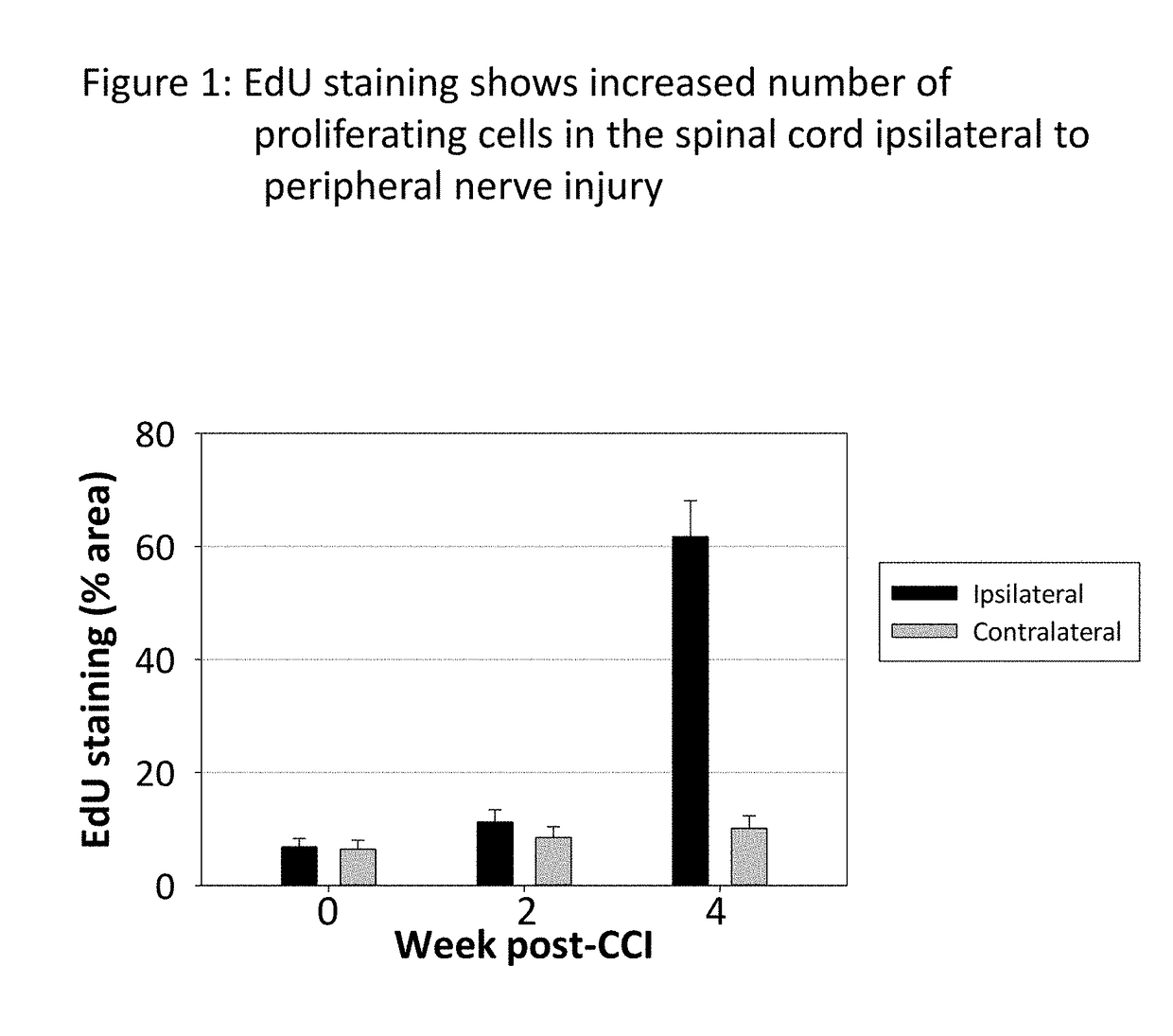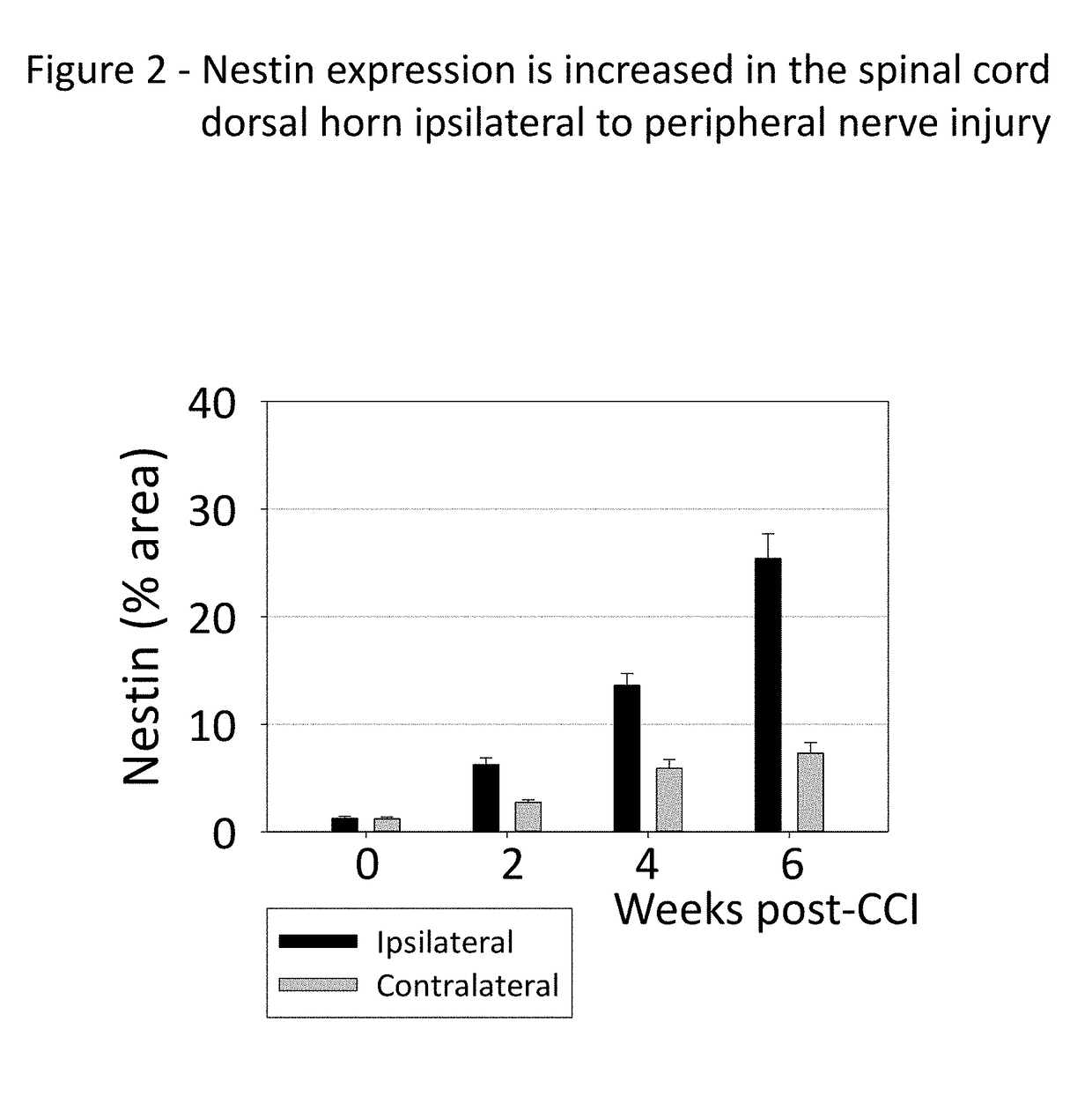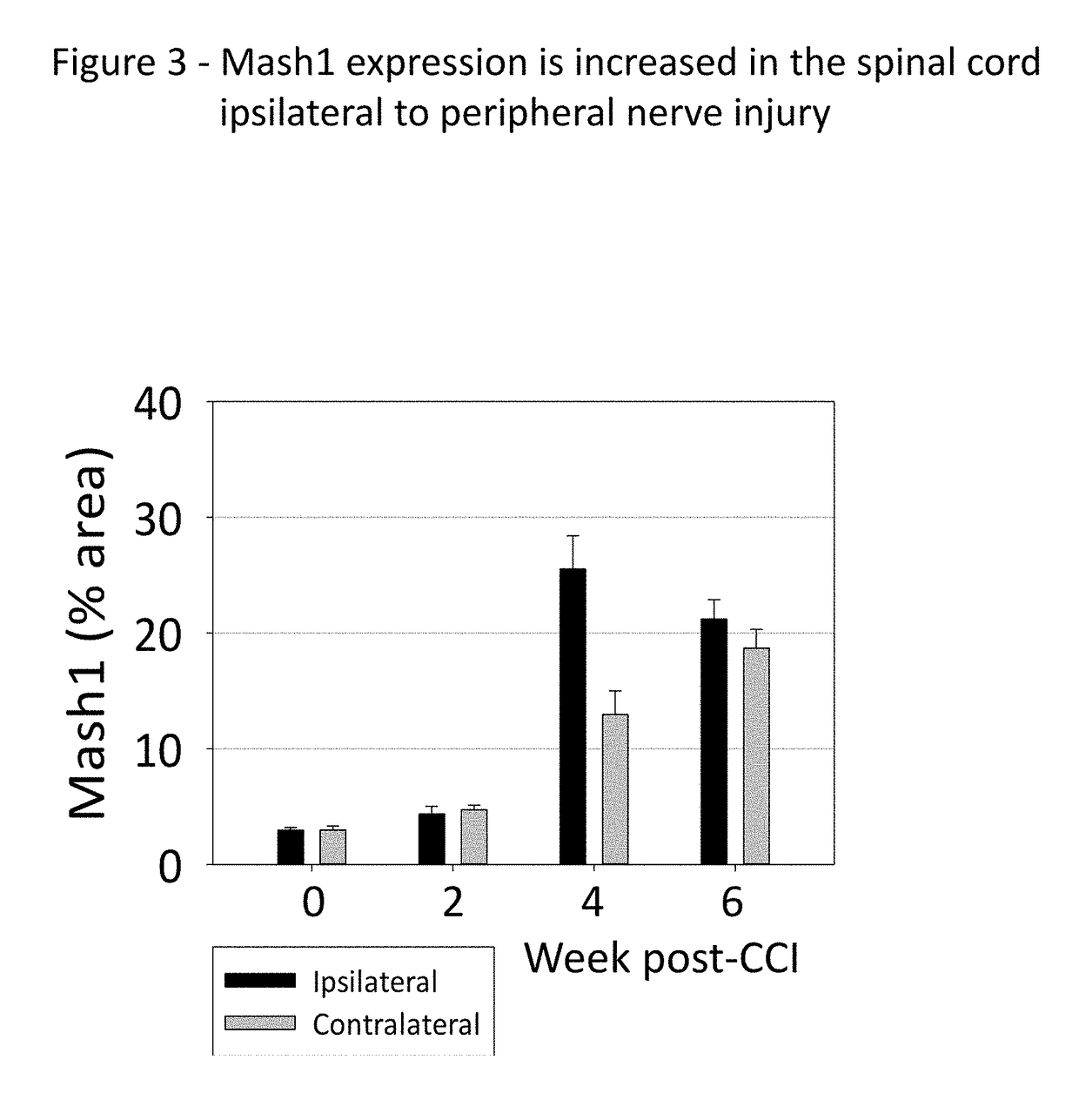Method of treating pain using agents that promote neuronal differentiation
a neuronal differentiation and pain technology, applied in the direction of dipeptide ingredients, peptide/protein ingredients, organic active ingredients, etc., can solve the problems of chronic pain without benefit, affecting normal activity, addiction to analgesics, etc., and achieves the effect of increasing the sensitivity of nociceptive sensitivity and sensitivity to pain
- Summary
- Abstract
- Description
- Claims
- Application Information
AI Technical Summary
Benefits of technology
Problems solved by technology
Method used
Image
Examples
example 1
Pain Sensitivity is Regulated by the Number of Spinal Cord Immature Neurons
[0147]The increase in the number of spinal cord immature neurons typically induces an increase in pain sensitivity. This idea was tested in commercially available Notch ko mice, which were analyzed for both pain sensitivity and the number of spinal cord immature neurons. Five Notch3 ko mice and five wild-type B6 mice, all male and 3 months old, were sacrificed by perfusion-fixation with 4% paraformaldehide. The fixed spinal cords were removed, then were frozen in Tek-OCT, then sliced in a microtome. The 35 micrometer-thick spinal cord slices were blocked in 2% bovine serum albumin in PBS, then double stained for immature neuron marker Calretinin and for mature neuron marker NeuN, using secondary antibodies with different absorption wavelengths. The slices were visualized by immunofluorescence, and the numbers of Calretinin-positive and NeuN-positive cells in the spinal cord layers I-II, responsible for pain t...
example 2
Chronic Constriction Injury of the Sciatic Nerve Induces a Simultaneous Increase in the Number of Spinal Cord Immature Neurons, and in Pain Sensitivity
[0148]The idea that immature spinal cord neurons can contribute to pain was tested using a standard experimental animal model, the chronic constriction injury of the sciatic nerve (CCI). Fifteen two-month old rats were subjected to CCI under pentobarbital anesthesia. Three chromic gut ligature were tightly placed around the right sciatic nerve. Fifteen control rats were subjected to the same surgery, but without placing the ligatures (Sham). Mechanical pain sensitivity on the hind paws was tested weekly, using a set of calibrated von-Frey filaments applied to the plantar surface. Thermal pain sensitivity on the plantar surface was tested weekly by applying a beam of radiant heat. The results are shown in FIG. 7, for the ipsilateral paw (A, B) and for the contralateral paw (C, D). The side ipsilateral to the injured nerve shows a much ...
example 3
A Reduction in the Number of Spinal Cord Immature Neurons Results in Reduced Pain Sensitivity
[0149]The epidermal growth factor (EGF) and the fibroblast growth factor 2 (FGF2) are known to be necessary for neurogenesis and the production of new neurons. Therefore, a reduction in the number of immature neurons present in the spinal cord was achieved by reducing the effective intraspinal activity of FGF2 and EGF. FGF2 concentration was reduced using a FGF2-specific neutralizing antibody. EGF signaling was inhibited using erlotinib, an inhibitor of the EGF receptor. The FGF2 antibody (10 microliters, 0.2 miligrams / ml) and erlotinib (5 microliters, 1 miligram / ml) were injected together (INH, FIG. 8) into the spinal canal (intrathecal injection) every other day for the first 3 weeks after CCI, using a phosphate buffer saline (PBS) vehicle. Control rats were injected with PBS vehicle alone (Veh). INH and Veh were each injected in separate rat groups, both in Sham animals (Sham+INH and Sham...
PUM
| Property | Measurement | Unit |
|---|---|---|
| resting membrane potential | aaaaa | aaaaa |
| spectroscopic | aaaaa | aaaaa |
| amino-acid residues | aaaaa | aaaaa |
Abstract
Description
Claims
Application Information
 Login to View More
Login to View More - R&D
- Intellectual Property
- Life Sciences
- Materials
- Tech Scout
- Unparalleled Data Quality
- Higher Quality Content
- 60% Fewer Hallucinations
Browse by: Latest US Patents, China's latest patents, Technical Efficacy Thesaurus, Application Domain, Technology Topic, Popular Technical Reports.
© 2025 PatSnap. All rights reserved.Legal|Privacy policy|Modern Slavery Act Transparency Statement|Sitemap|About US| Contact US: help@patsnap.com



